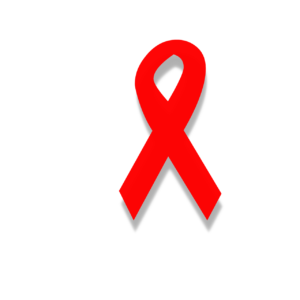World AIDS Day

 By David Mans
By David Mans
Translated by Joel McDonald
On December 1st of each year, the first against AIDS and HIV is commemorated.
In the year 1981, deaths began to register among the homosexual population of the United States, all of them related to the weakness of the immune system, people died of causes normally harmless to the majority.
In 1981, deaths among the homosexual population in the United States began to be noticed; all of them related to the weakness of the immune system. People were dying from causes that were very treatable normally.
AIDS was first diagnosed in 1983 after it was discovered that these mysterious deaths were caused by the same virus: Human Immunodeficiency Virus (HIV). This virus was largely unknown until actor Roch Hudson publically shared that he had been infected.
New Infections Occur Every Year
During the first years AIDS was a death sentence, but with the evolution of the treatment is currently considered a chronic disease, which can be controlled with antiretrovirals, good diet, and exercise, in addition to the checks that the carriers have to perform regularly.
Perhaps this relaxation in terms of the consequences that the disease presents us with is that it has not yet been eradicated. Even in Argentina, the contagion has been increasing among young men between 15 and 29 years, according to the newspaper La Nación:
The shift from being a death sentence to being a treatable condition is perhaps one of the reasons the disease has yet to be eradicated. Even in Argentina, the disease has been increasing among young men between 15 and 20 years old according to the newspaper, La Nación,
“According to the report that the Ministry of Health of the Nation … decreased in these years the proportion of men who contract the infection in sexual relationships with women from 51% in 2008-2010 to 42.2% in 2014-2016. ‘It is a totally opposite trend to what happens with men who became infected during sexual relations with other men, which went from 43.3% in the 2008-2010 triennium to 56% in 2014-2016, that is, a percentage growth of almost 13 points’, warns in the Bulletin on HIV, AIDS and Sexually Transmitted Infections (ITS) in Argentina.” (HIV: Cases grow in men between 15 and 29 years old)
The main cause of infection is unprotected sex without a condom or other prophylactic.
The numbers of the Ministry of Health of the Argentine Nation is a reflection of what happens worldwide. According to the Spanish newspaper El País, there was an increase in the percentage of new infections among those under 30 years of age: it was 25.9% between 2004 and 2009 when antiviral treatments with high efficacy were generalized. In 2014, the last year with data, those in this age group represented 29.4% (World Day Against AIDS: The key to not disappearing).
What the WHO Says
Although it is not considered a deadly disease, the fact is that people continue to die from causes related to HIV. In 2016, one million people infected with the virus died and 1.8 million people became infected.
The World Health Organization (WHO) estimates that there are 36.7 million people around the world living with HIV and that 70% of these people do not know it.
What is most aberrant of this reality is that almost half (47%) of infected adults and more than half of children (57%) do not have access to antiretroviral treatment. Without treatment, it is estimated that an affected person can survive on average, after infection, between 9 and 11 years.
According to WHO, the groups at greatest risk are:
There are population groups that deserve special attention because of an increased risk of HIV infection, regardless of the type of epidemic and the local situation: men who have homosexual relationships, injecting drug users, prisoners and people who are incarcerated. In other settings, sex workers and their clients, and transsexuals. (WHO HIV / AIDS)
But the truth is that each one of us can contract the disease. Not to obsess, but be careful; not only for ourselves but for those who love and love us.
Preventing Infection
HIV is transmitted through the exchange of certain body fluids of the infected person, such as blood, breast milk, semen or vaginal secretions. The care we can take to prevent infection is simple:
- Use a condom or other forms of protected sex. This is very important: do not trust the word of a person you just met. Although they may appear to be healthy, it’s impossible to know if someone is infected with HIV by looking at them.
- Get tested regularly, even if you think that your chances of being infected are low. We must remember that more than half of those infected do not know they are infected.
- Always ensure that clean needles are being used when receiving immunizations or other medical treatment.
- Never share razors, needles, or anything else that might come in contact with another person’s blood.
- And it’s not a bad idea to wear a pair of latex gloves for any situation that involves another person’s blood (an accident, or someone’s nose, etc.).
It is not possible to become infected in ordinary everyday contacts such as kissing, hugging or shaking hands or sharing personal items, water or food.
Therefore sharing a glass, hugging, kissing, and showing love to an infected person is not going to result in us catching it too, and often it is what these people need most.
Remember that to take care of ourselves is to take care of our loved ones. Although HIV is not a death sentence, it is a disease that requires daily care and difficulties. Complications can occur with other health conditions (for example diabetes, hypertension, obesity, etc.) and our environment, which often can not be predicted.